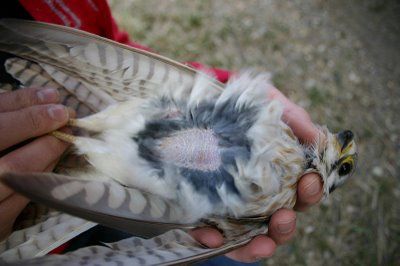
23 April 2010
Imagine trying to keep your children warm on a cold night by hugging them to the outside of your winter coat. They will still be cold unless you open your coat and hug them to your skin.
Birds incubate their eggs and brood their chicks by “opening their coats” to keep their children warm.
Feathers are great insulation so during the nesting season birds must develop a bare patch of skin — a brood patch — to allow the eggs to come in direct contact with their bellies. The brood patch also has extra blood vessels close to the skin to heat the eggs. At the end of the nesting season the blood vessels recede and the feathers grow back to keep the adult warm.
In species where only the female incubates, the male doesn’t develop a brood patch. In peregrines, Birds of the World explains that both male and female peregrine have brood patches: “Both sexes have paired lateral brood patches. Less well developed in male.” Peregrine couples share incubation.
If you watch the streaming webcams you’ll see the adult peregrines rock up-and-down and side-to-side as they settle on the nest. This rocking opens the feathers that have curled over the brood patch and puts their skin in contact with the eggs or chicks.
Shown here is a brood patch on a female American kestrel, North America’s smallest falcon. The person holding the bird reveals the brood patch and the downy black feathers surrounding it by blowing upward on the bird’s belly.
Imagine how cold a brooding falcon can get in an updraft!
(photo by Jared B. Clarke, author of Bird Banding in Saskatchewan from his May 6, 2009 blog, Eggs have been laid)
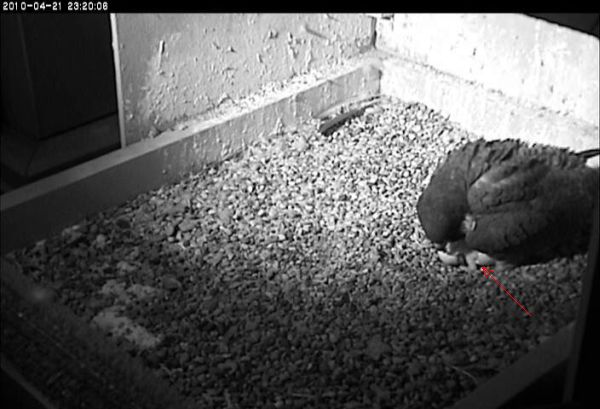
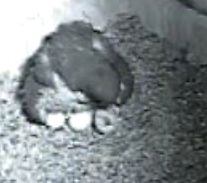 <= Dorothy looks down at the chick still inside the egg shell.
<= Dorothy looks down at the chick still inside the egg shell.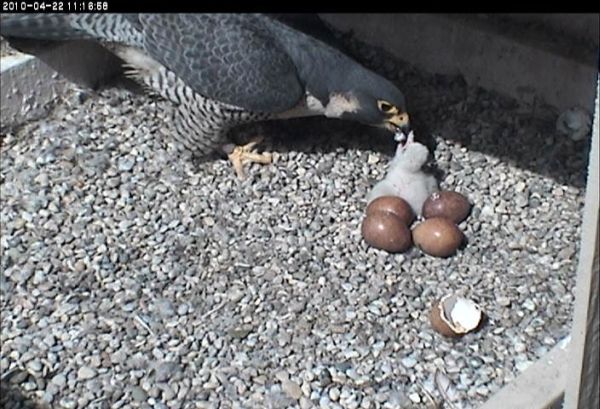
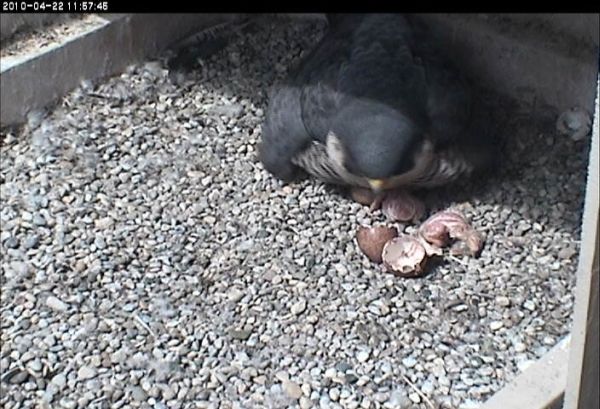
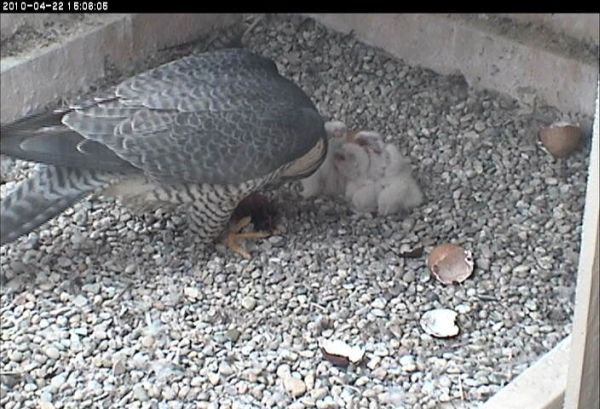
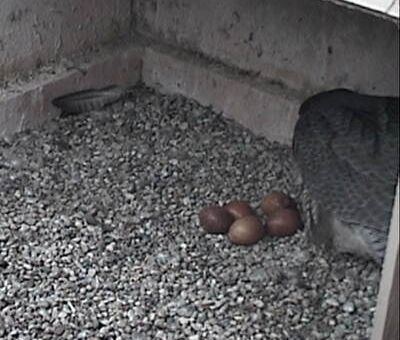
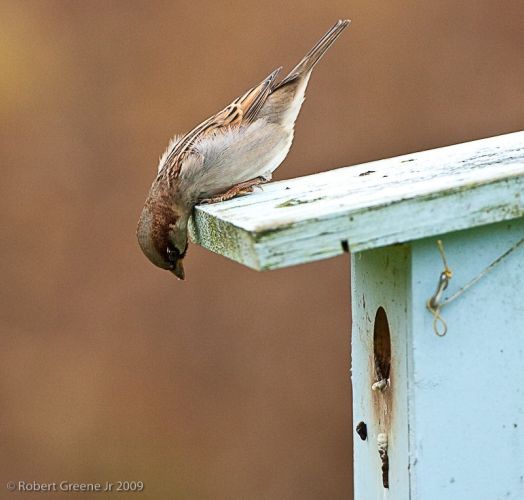
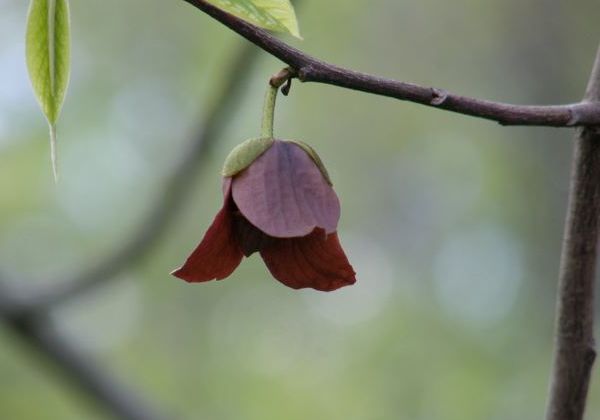
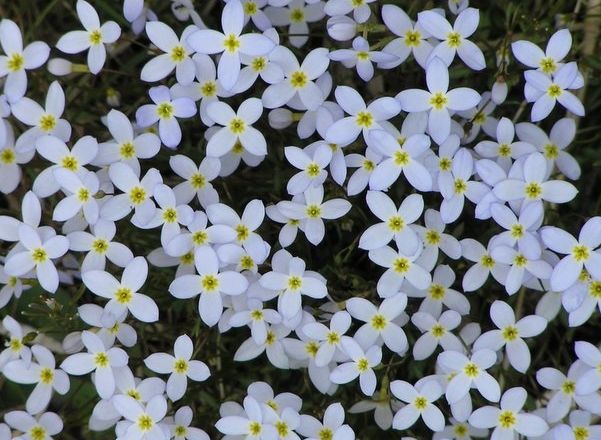
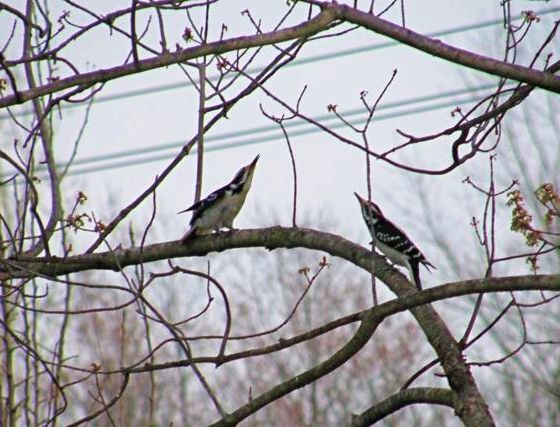
 For several weeks we’ve learned about body parts that are the same on birds and humans. Today’s lesson is very different.
For several weeks we’ve learned about body parts that are the same on birds and humans. Today’s lesson is very different.